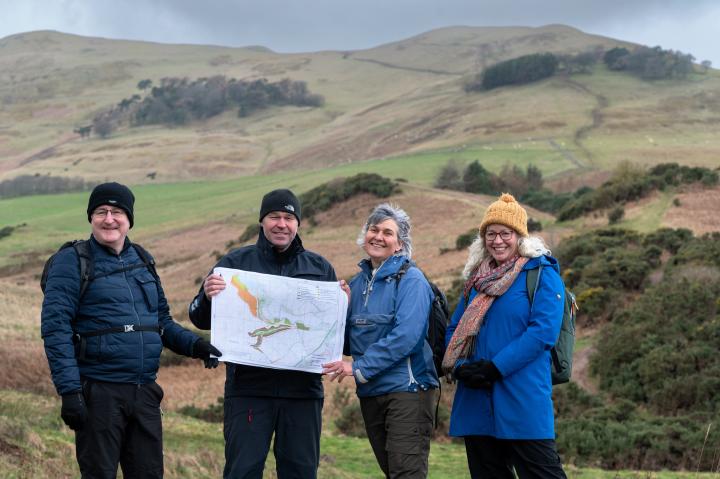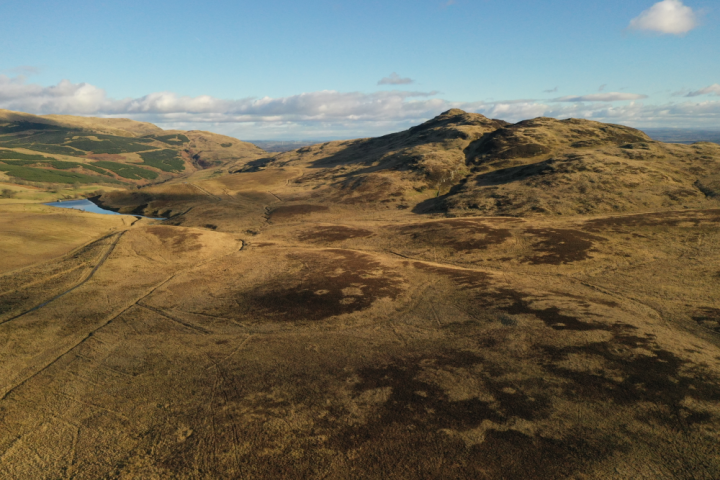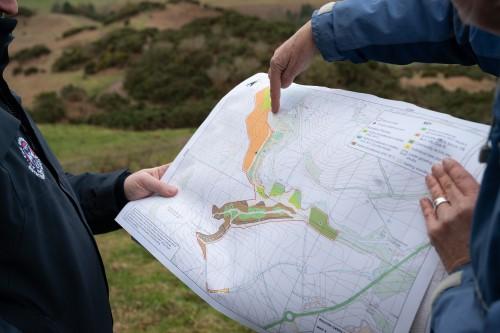Forest and peatland scheme sows seed for net zero
Work to plant woodland and restore peatlands in Scotland has begun as part of a project to capture the University of Edinburgh’s carbon emissions.

The scheme – thought to be the biggest of its kind undertaken by a UK university – will offset any carbon emissions that can’t be reduced to zero.
The University will work with partners across Scotland to plant an estimated 2 million trees and restore at least 855 hectares of peatlands, the size of more than 1,200 football pitches.

A 431-hectare site overlooking the Ochil Hills in Stirlingshire and 26 hectares at Rullion Green in the Pentland Hills Regional Park near Edinburgh are the first of several sites that will be regenerated.
Over the next 50 years, the project is expected to remove 1 million tonnes of carbon dioxide from the atmosphere, equivalent to more than 9 million car journeys between Edinburgh and London.
The multimillion-pound project is a key component to the University’s drive to reach net zero by 2040, which includes a commitment to reduce carbon emissions to zero across its operations.
Emissions generated from flying, which can’t currently be reduced to zero, will instead be offset using the restored sites.
Enhancing biodiversity
As well as removing and storing carbon from the atmosphere, the planted woodlands and restored peatlands will also play a crucial role in enhancing biodiversity, experts say.
The project team – which includes foresters and ecologists – have worked with consultants to design woodland and habitats to fit with local landscapes.
Open areas will also be maintained to support the existing wildlife. The improved habitats will encourage more native species such as birds, red squirrels, butterflies and moths, the team say.
The global climate emergency and biodiversity loss go hand in hand. Creating woodlands and restoring peatlands is a fantastic nature-based solution that will help us achieve our own environmental goals and, at the same time, allow us to play an active role in restoring Scotland’s landscape and help make it more resilient for future generations.

Positive benefits
Both locations will remain accessible to the public. Existing picnic spots and outdoor recreational spaces for walking and cycling will be maintained and new ones developed.
Surveys have also identified historical features, including part of the historic battleground of the 1666 Battle of Rullion Green – part of the Covenanter revolt against the government – at the Pentland Hills site. The University will conserve these areas and plans to install information points for visitors.
There are also plans to launch community driven initiatives, such as helping to plant endangered wildflowers, to encourage people to connect with nature.
Project leaders hope the sites will serve as a valuable educational resource for University researchers and students, as well as visitors and schools in the local communities.
We recognise the urgency of taking action to address the climate crisis, and this project underpins our commitment to take clear and tangible steps towards net-zero. This approach means our actions go beyond storing carbon; these valuable green spaces will become havens for nature and create spaces that everyone in our community can continue to enjoy.
Environmental ambitions
The University has ambitious targets to address climate change. Since 2021 it has completely divested from fossil fuels, introduced a sustainable travel policy and invested in programmes to improve the energy efficiency of its estate.
In the past five years more than £60 million has been invested in low carbon and renewable energy technologies, and £74 million of research funding has been secured towards sustainability and climate change research.
The University is currently ranked 15th in the world for sustainability by the QS World University Rankings: Sustainability 2024, reflecting the actions it has taken to become more environmentally and socially responsible.
Related links
Carbon sequestration | The University of Edinburgh
Sustainability | The University of Edinburgh
Photo credit - Julie Howden

